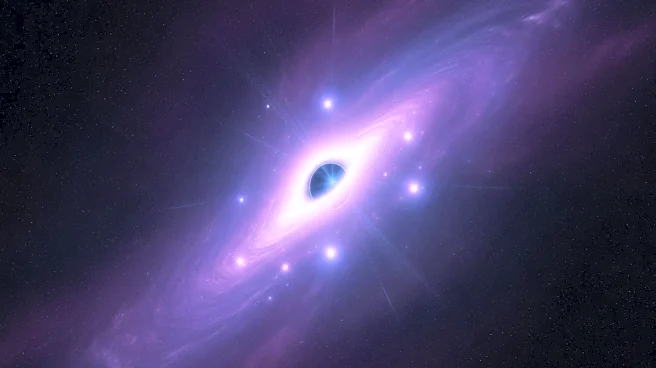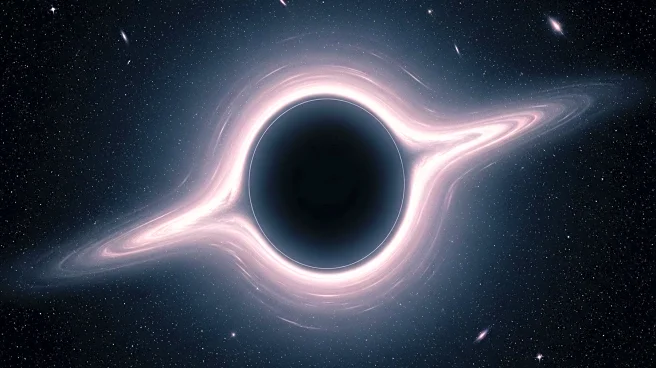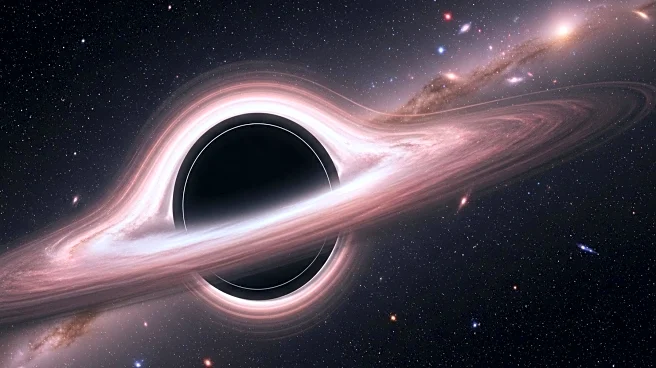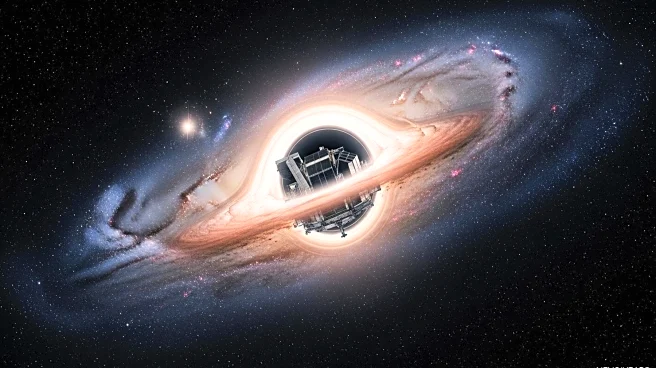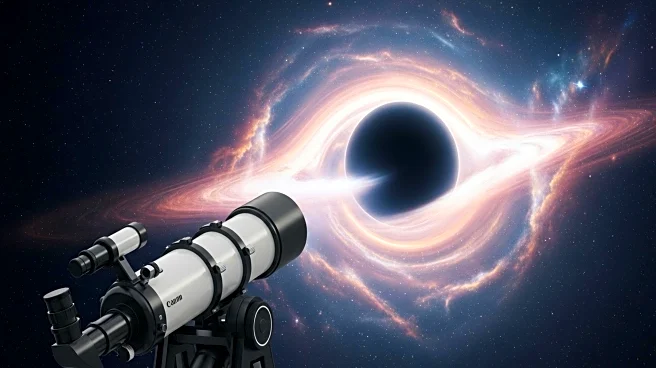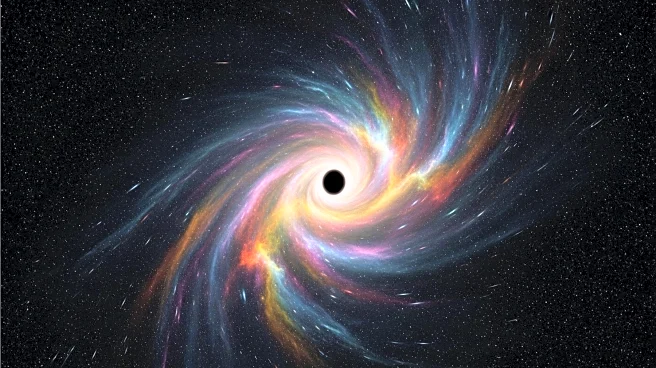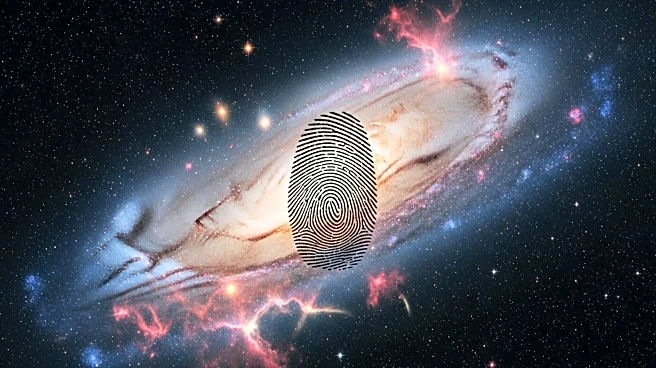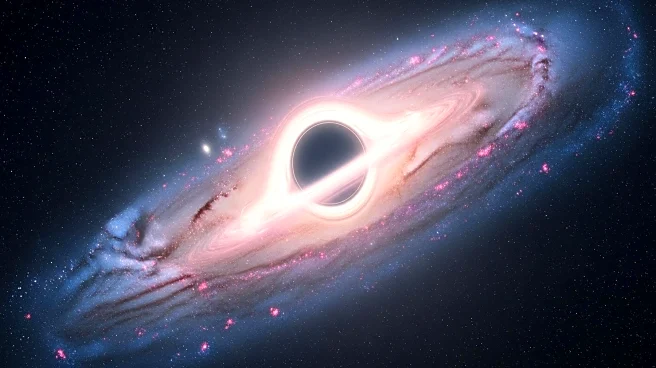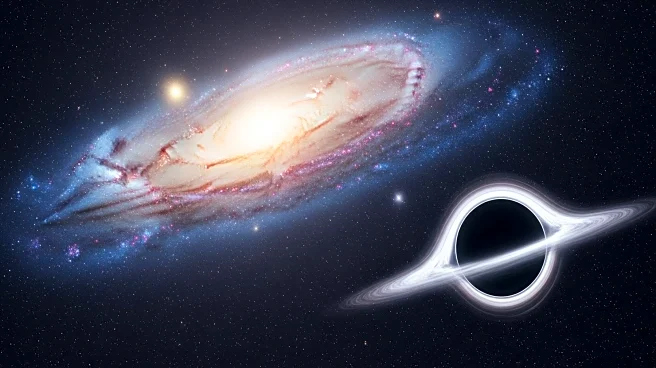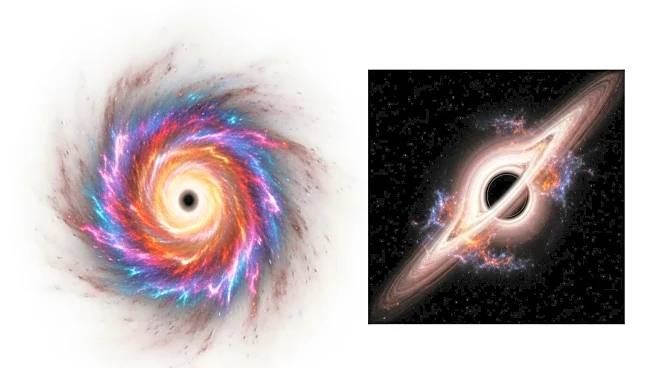What's Happening?
Astronomers have identified a supermassive black hole, RACS J0320-35, in the early universe that is growing at a rate exceeding the theoretical Eddington limit. This discovery challenges existing models of black hole growth, as the black hole is consuming matter at 2.4 times the expected rate. The black hole, located 920 million years after the Big Bang, has a mass approximately 1 billion times that of the sun. The research, conducted using NASA's Chandra X-ray Observatory, highlights the black hole's rapid growth and its implications for understanding the formation and evolution of cosmic structures.
Why It's Important?
The discovery of RACS J0320-35 growing beyond the Eddington limit has significant implications for cosmology and astrophysics. It suggests that black holes in the early universe may have grown faster than previously thought, potentially altering our understanding of cosmic evolution. This could impact theories about the formation of galaxies and the distribution of matter in the universe. The findings may also influence future research directions, as scientists seek to understand the mechanisms allowing such rapid growth and the role of black holes in shaping the universe.
What's Next?
Further research is needed to explore the mechanisms behind the rapid growth of RACS J0320-35 and other similar black holes. Scientists may use advanced telescopes like the James Webb Space Telescope to study these phenomena in greater detail. Understanding the growth patterns of early black holes could provide insights into the universe's evolution and the formation of large-scale cosmic structures. Additionally, the potential termination of the Chandra X-ray Observatory by the Trump administration's proposed budget could impact future observations and research.
Beyond the Headlines
The discovery raises questions about the stability of black holes growing beyond the Eddington limit and their potential to emit energy jets. These jets could influence the surrounding cosmic environment, affecting galaxy formation and interstellar matter distribution. The study of super-Eddington black holes may also reveal new aspects of gravitational physics and the behavior of matter under extreme conditions.

